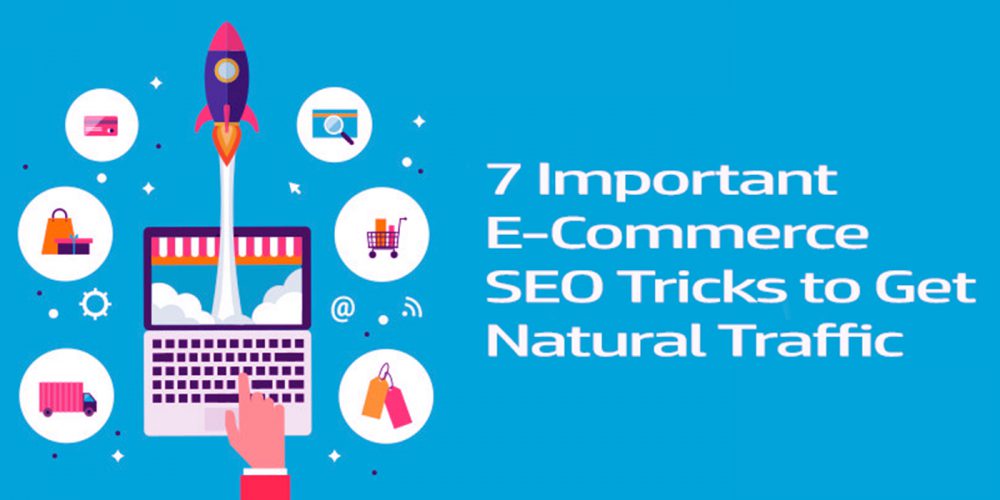


In order for an Entrepreneur or an e-commerce marketer to build a strong digital marketing strategy, integrating E-commerce SEO is need as this provides the foundation of websites. E-commerce search engine optimization is a process that involves generating traffic to your specific website from search engines such as Yahoo, Google, and Bing.
Therefore, as an E-commerce marketer or an Entrepreneur, you will need to develop strategies in order to increase the traffic and sales on your website. Discussed below are important e-commerce SEO tricks and among the best SEO Quotes that one can use to get natural traffic:
Enhancing e-commerce analytics tracking in the google analytics is one major factor that a marketer should consider in order to comprehend factors that affect your online sales. This feature enables advanced measurement of how customers interact with your products across the website.
It does not only provide detailed information on how the customers behave but also offers other reporting features like product performance, shopping behavior, sales performance, checkout behavior, and product list performance.
To optimize your e-commerce website, you will need to enhance it. This opens up a world of information by using available data to uncover deeper insights into promotion, campaign success, transaction details, conversion rates, and revenue. As you begin the journey of e-commerce SEO, this feature will aid in making you more informed on data-driven and well-thought decisions on how to optimize your website.
As a thoughtful marketer, you will definitely need to know who your competitors are and analyze them. This can be easily done by just searching them on google or by using tools such as SEMRush to conduct the following.
Setting the right direction with keywords is significant for a marketer. Do not make guesses such as phrases and terms based on how you think your customers will search. You ought to develop some smart e-commerce keyword criteria that are most likely to attract more customers. Factors to consider include high ability to rank, great buying phrases, product-focused words, convertible terms, fewer competition statements, and decent volume.
Look for keywords that have winning phrases and those that are considered the ideal criteria in all ways possible. Find keywords that have high volume searches and are most likely to turn into potential customers. Avoid keywords that are dominated by big names such as Amazon, so choose those that you have a chance to rank for.
How customers interact with your website is a great determinant for the success of your business. It’s advisable for a marketer to have a page design that enables users to interact easily so that it can result in a positive effect on your business. A clunky website design will discourage users from using it.
In order to achieve this, optimize your internal site search. This involves confirming that your onsite search functions are directing users to the correct products whether they have misspelled words or are using synonyms and spacing errors. By doing so, a marketer is able to analyze searches, assist with keyword research, and find new product ideas.
There is a continuous increase in the number of online shoppers relying on mobile devices. Thus, it is essential to provide positive mobile experiences for all users. You need to ensure that your website is quick to load, easy to navigate, and responsive enough for any mobile devices.In addition, Google is now using your website’s mobile version as the starting point for the things to be part of their index – thanks to the development of ‘mobile first indexing’. This indicates that your mobile site provides the foundation which Google will use to determine rankings.
Hence, e-commerce store owners should check the following:
Visuals are known to add user experience and leverage to increase exposure in order to promote your store. In fact, there is a 64-85% chance ofa customer making a purchase after watching a particular video. A video is a basic format that creates an emotional connection with customers and the nearest they can get to interact with your product before purchasing.
If your visitors happen to spend time interacting with videos, they tend to remain on your website longer. These increases dwell time, which sends an alert to Google that your page is valuable. A valuable webpage is known to rank higher, and this means more exposure for your brand and products.
Google understands all this, therefore rewarding videos with an increased mode of visibility in the SERPs.
The union of SEO and user experience is continuously evolving by positive user experience measurement done by Google. Google evaluates User experience by using elements of traditional SEO such as mobile friendliness, page structure, links, and page speed.
Beyond this, Google uses “user signals” for evaluating how visitors interact with your website. Behavioral patterns such as bounce rate, time spent on site, and the rate at which users return to your website help Google to understand if visitors are satisfied with the experience your store is providing.
If you’re a budding e-commerce marketer, these are some of basic SEO advertising strategies that you can apply. They are not only simple to comprehend and easy to access, but they are also one of the most effective ways to engage more customers, increase traffic, and boost your visibility on search engines.
Comments are Closed